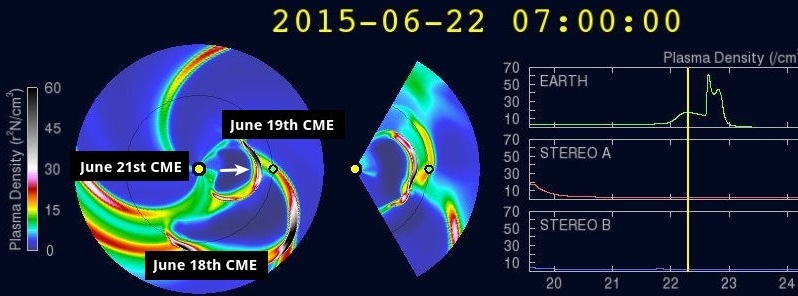MC0SHL Blog updated by Chris G1VDP.
Follow this link to read the information….. MC0SHL click here or on image above.
Thanks Chris…
MC0SHL Blog updated by Chris G1VDP.
Follow this link to read the information….. MC0SHL click here or on image above.
Thanks Chris…
Message from Harald XT2AW (D44TWO, DF2WO) regarding his hasty departure from XT2 land;
”Dear Ham-Radio-Fellows,
knowing very well, that many of you are disappointed, not have been able to work Burkina Faso during my stay, please let me try to explain why this happened.
First of all, my equipment got lost on the flight and came several days later.
In Ougadougo I had to overcome many obstacles: The main power failed very often, there was a very strong qrn, the conditions towards Asia VK, ZL and JA were extremly poor and last but not least, the computer very often refused to work, so the planned JT65-traffic couldn’t take place. And finally, I had to leave Ougadougu two weeks earlier than planned at first.
But all is not lost. For coming November, there will be another trip to Bukina Faso.
I’m looking forward, to meet you all on frequency during this coming stay in XT-country.
So for now, please accept my excuses for this more or less failed expedition and let’s look ahaed to November.
With best regards and 73s,
Harald, DF2WO/XT2AW”
Beyond Earth, Jupiter’s moon Europa is considered one of the most promising places in the solar system to search for signs of present-day life, and a new NASA mission to explore this potential is moving forward from concept review to development.
NASA’s mission concept — to conduct a detailed survey of Europa and investigate its habitability — has successfully completed its first major review by the agency and now is entering the development phase known as formulation.
“Today we’re taking an exciting step from concept to mission, in our quest to find signs of life beyond Earth,” said John Grunsfeld, associate administrator for NASA’s Science Mission Directorate in Washington. “Observations of Europa have provided us with tantalizing clues over the last two decades, and the time has come to seek answers to one of humanity’s most profound questions.”
NASA’s Galileo Mission to Jupiter in the late 1990s produced strong evidence that Europa, about the size of Earth’s moon, has an ocean beneath its frozen crust. If proven to exist, this global ocean could hold more than twice as much water as Earth. With abundant salt water, a rocky sea floor, and the energy and chemistry provided by tidal heating, Europa may have the ingredients needed to support simple organisms.
The mission plan calls for a spacecraft to be launched to Jupiter in the 2020s, arriving in the distant planet’s orbit after a journey of several years. The spacecraft would orbit the giant planet about every two weeks, providing many opportunities for close flybys of Europa. The mission plan includes 45 flybys, during which the spacecraft would image the moon’s icy surface at high resolution and investigate its composition and the structure of its interior and icy shell.
Click image above for You Tube video.
Three Coronal Mass Ejections (CMEs) produced on June 18, 19 and 21 have now all arrived at our planet and their combined effects caused G4-Strong geomagnetic storm on 22nd June 2015.
Two of the three CMEs were produced by Region 2371, one of the biggest regions of the current solar cycle, which is currently directly facing Earth. This region has ‘beta-gamma-delta’ magnetic configuration and is capable of producing more strong to major eruptions on Sun. Due to its location, CMEs this region could produce over the coming days would most likely be Earth-directed.
Full-halo CME produced by a long duration M3.0 solar flare which erupted at 17:35 UTC on June 18 hit our planet at 16:50 UTC on 21st June. It was a glancing blow followed by the arrival of partial-halo CME (produced by filament eruption in the SSE quadrant early June 19) at 05:45 UTC on 22nd June.
Direct hit by full-halo CME produced early 21st June was registered at 18:37 UTC.
Geomagnetic K-index of 8 (G4-Severe) threshold was reached at 18:52 UTC.
Area of impact is primarily poleward of 45 degrees Geomagnetic Latitude.Under G4-Severe conditions, widespread voltage control problems are possible and some protective systems may mistakenly trip out key assets from the power grid. Induced pipeline currents intensify.
See You Tube video of CME click here https://www.youtube.com/watch?v=X9dzD2BRIM8
We would like to announce that we are currently in the final planning stages of our regular trip to Ramsey Island – IOTA EU-124. This year we are going to try to have 3 stations on air full time as we are only there for 3 nights.
Arrive on island Friday 19th June
Depart island Monday 22nd June
We will be using 3 of the new “Hexpedition” hexbeams built by Ant, one will be directed to the West to allow us to work as many stations in the USA as possible as we seem to be lacking contacts from there each year. There may be some digi mode operating and again we will be looking on 6m to work as many as possible on there too.
The full team this year are; Rob MW0RLJ, Ant MW0JZE, Tim M0URX, Charles M0OXO, Tony G4LDL, Chris G1VDP, Vinny M0TAV, Laura MW6INK, Glenys G8KWD.
There may be some operating the days from Monday 15th, before and after the Island visit from the farm as we all assemble and get ready to travel. Please also 
We look forward to meeting you on the air and again we ask to listen to who we call and just act in a true Ham Spirit and allow us to complete the QSO’s. Please also follow us on Twitter. Click the image to the right…..>>>>>
How often do we look for retailers when we need new cables?
If it’s patch leads, interface cables, Digi-mode software that you are looking for then why not try Billy GM0OBX. No job is too small for Billy and he has a pretty fast turnaround too!
Check his sales page but if you don’t see what you need then drop him an email, I am sure he will accomodate or at least advise you on your requirements.
Click the logo above to visit his sales page or see the link in the left sidebar.
Dindo DV1UD/p is now qrv from Batan Island IOTA OC-093 (Batan Islands Group).
The Province of Batanes is an island province in the region of Cagayan Valley, Philippines. It is the northernmost province of the Philippines and is also the smallest province, both in terms of population and land area. The provincial capital is Basco on Batan Island.
The island group is located about 162 kilometres (101 mi) north of Luzon and about 190 kilometres (120 mi) south of Taiwan, separated from the Babuyan Islands of Cagayan Province, Luzon, by the Balintang Channel and from Taiwan by the Bashi Channel.
Dindo is scheduled on the Island until the 6th June 2015. Qsl via M0OXO
Due to many repeated requests, I am almost ready to confirm contacts with 3B9FR on LOTW (Logbook of the World) for the first time. This is not as simple as you may think.
Robert 3B9FR still uses paper logs and I have to input this data into the PC log when he sends them. He can work between 50 and 500 qso’s a day so this task takes a lot of time. I currently have many paper logs and in the PC I have around 70,000 qso’s. My intention is to upload the 70,000 to LOTW and this will pacify many of you. All future logs will be uploaded as a matter of course.
The problem lies with historic qso’s. I simply cannot accept email enquiries at this stage as there will be hundreds and the only solution is to upload historic qso’s (pre 2014) as and when Direct Qsl Cards are requested. This can be done by Direct Post mail or using OQRS. OQRS Bureau requests can be made but I must stress of course that OQRS Direct & Post Mail Direct requests will have to take precidence. These will be uploaded to LOTW as soon as the request is processed. I am not chasing dollars here guys, searching through paper logs takes a huge amount of time and for each request with more than a few contacts, this can take 15 minutes or longer per request. I simply do not at this stage have the time to answer Log checks enquiries by email so please be patient.
I am sure this will change with the passing of time but please DO NOT send me emails as they may go unanswered.
Evidence of these processes can be seen in this image from ESA’s Mars Express orbiter. The image shows part of the Arabia Terra region, which is scattered with craters of varying sizes and ages. The craters in this image, caused by impacts in Mars’ past, all show different degrees of erosion. Some still have defined outer rims and clear features within them, while others are much smoother and featureless, almost seeming to run into one another or merge with their surroundings.
The largest crater in this image also has the steepest rim. With a diameter of some 70 km, this crater dominates the left, southern, side of the frame. At first glance, this image seems to show something amazing in this crater, and in one of its neighbours to the right: is this a hint of blue liquid water? No, it is an optical illusion caused by the image processing. The blue-hued patches lying within the ragged craters are actually dark sediments that have built up over time. Again, this is due to the winds, which carry dark, volcanic, basalt-rich deposits across the planet.
This colour image was taken by Mars Express’s High Resolution Stereo Camera on 19 November 2014, during orbit 13728. The image resolution is about 20 m per pixel.